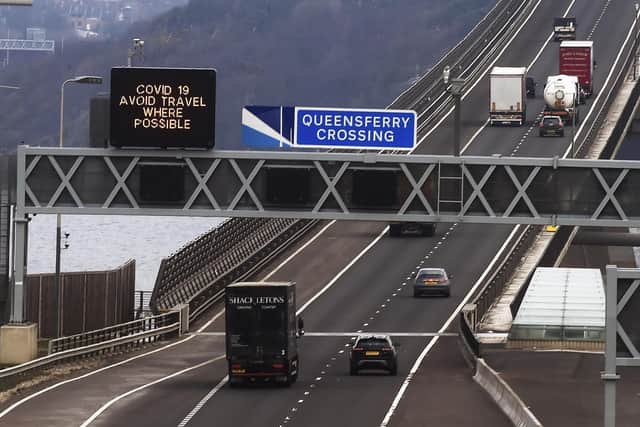Queensferry Crossing wind shielding success


The landmark was reached during storms in early February, which brought winds gusting up to 68mph to the Forth Bridges.
The Queensferry Crossing is fitted with specially designed 3.3-metre-high wind shielding, which deflects gusts of wind up and over traffic. This allows it to remain open at significantly higher wind speeds than the Forth Road Bridge.
Advertisement
Hide AdAdvertisement
Hide AdSince the Queensferry Crossing opened in August 2017, winds gusting over 50mph have been recorded by anemometers on the bridge on 115 separate occasions, while winds gusting over 70mph have only been recorded five times.
In 2015 the Road Haulage Association estimated the additional operating costs to the haulage industry of a day’s closure of the Forth Road Bridge as “well in excess of £600,000. Martin Reid, the Road Haulage Association’s director for Scotland and Northern Ireland, said: “The Queensferry Crossing continues to provide road freight with a key route to and from market. Delays and detours add unwelcome cost to all supply chains, but especially the cargoes that are time critical or provide lifeline services to vulnerable communities.
“The fact that the Queensferry Crossing has remained open to freight in conditions that would have previously closed the old Forth Road Bridge over 100 times is incredibly welcome to these communities and the businesses who quite literally move the Scottish economy.”
The Forth Road Bridge is routinely closed to high-sided and wind-susceptible vehicles for safety when winds gust over 50mph. The Queensferry Crossing’s wind shielding allows it to remain open to high-sided vehicles in winds up to 70mph.
Advertisement
Hide AdAdvertisement
Hide AdChris Tracey, BEAR Scotland’s South East Unit Bridges Manager, said: “The wind shielding on the Queensferry Crossing has brought significant benefits in terms of safety and reliability.
“Since it opened in 2017, the Queensferry Crossing has never been closed to cars due to high winds, and we’ve only had to divert high-sided vehicles on a handful of occasions.
“When the Forth Road Bridge was the main route over the Forth, lorries and other wind-susceptible vehicles were regularly diverted via Kincardine during high winds, and vehicles that ignored these restrictions were at risk of being overturned by strong gusts.
“It wasn’t possible to install wind shielding on the Forth Road Bridge due to the extra load this would have placed on the structure, however the Queensferry Crossing was designed to accommodate the loads associated with the wind shielding and we’re pleased that road users have benefited.”